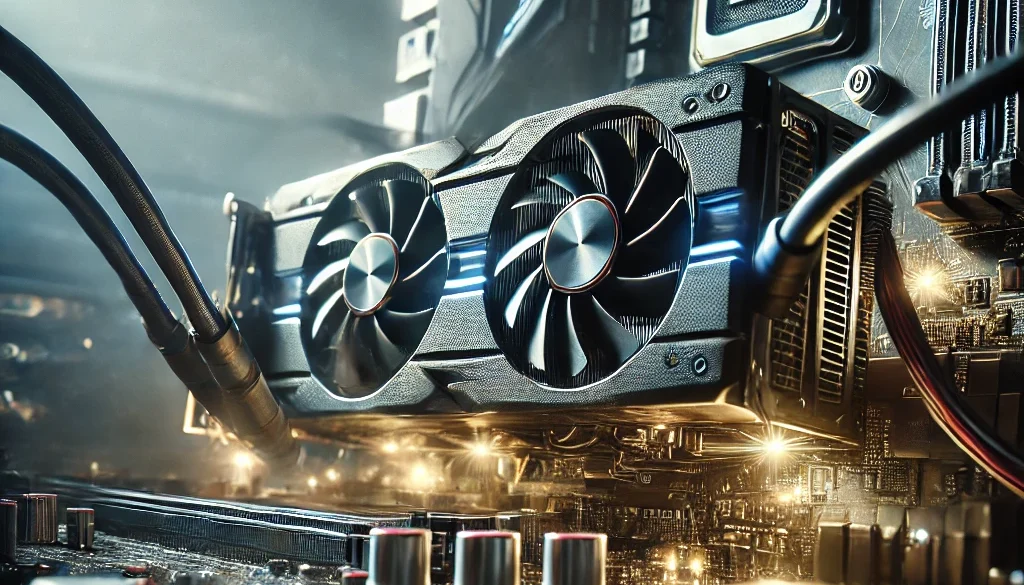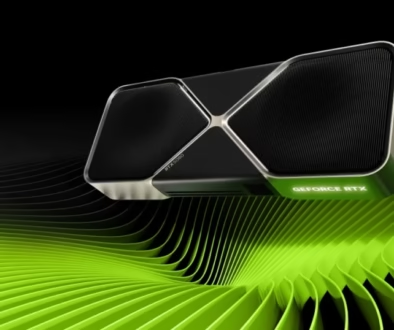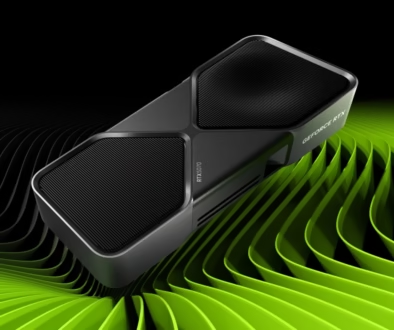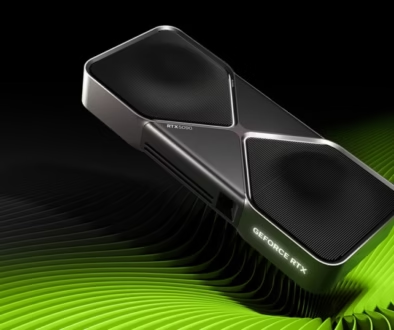How to Squeeze Every FPS from Your Low-End Graphics Card
When you purchase through links on our website, we may earn an affiliate commission.

Are you tired of watching your friends enjoy silky-smooth gameplay while you’re stuck with a stuttering mess? Well, buckle up, because I’m about to let you in on a little secret: your low-end GPU might have more fight in it than you think!
Did you know that with just a few tweaks, you could potentially boost your FPS by up to 20% on a budget graphics card? I didn’t believe it either until I saw it with my own eyes. As a lifelong gamer who’s spent more time than I’d like to admit squeezing every last frame out of my modest hardware, I’ve learned a thing or two about maximizing GPU performance.
Look, we can’t all afford the latest and greatest graphics cards. But that doesn’t mean we can’t enjoy our favorite games! In this guide, I’m going to share all the tricks I’ve picked up over the years to help you milk every last drop of performance from your low-end GPU. We’ll dive into everything from basic Windows tweaks to advanced overclocking techniques. Don’t worry if some of that sounds intimidating – I’ll break it all down in simple terms that even my grandma could understand (and trust me, she still thinks a mouse is just a small furry animal).
So, whether you’re trying to run the latest AAA title or just want to give your old faithful GPU a new lease on life, stick with me. By the end of this guide, you’ll have all the tools you need to maximize your GPU performance and boost your FPS. Who knows? You might even be able to finally turn on some of those fancy graphics settings you’ve been eyeing. Let’s get started!
Understanding Your Low-End GPU
Alright, folks, before we start tweaking and optimizing, we need to know exactly what we’re working with. It’s like trying to soup up a car – you wouldn’t start modding without knowing if you’ve got a trusty Toyota or a temperamental Ferrari under the hood, right?
First things first, let’s identify your GPU model and specs. Don’t worry, you don’t need to crack open your PC case for this (though if you do, maybe give it a dust while you’re in there, eh?). Here’s how to find out what GPU you’re rocking:
- Hit the Windows key + R to open the Run dialog
- Type “dxdiag” and hit Enter
- Click on the “Display” tab
- Look for the “Name” field under the Device section
Voila! You now know what GPU you’re dealing with. Jot down that name – we’ll need it later.
Now, here’s where the fun begins. Time to do a bit of research on your card’s capabilities and limitations. I remember when I first started out, I thought my old GT 730 could handle anything I threw at it. Boy, was I in for a rude awakening!
Head over to your GPU manufacturer’s website or tech-savvy sites like TechPowerUp. Look up your card’s specs, paying special attention to:
- Core clock speed
- Memory clock speed
- VRAM amount
- Power requirements
These numbers will give you a good idea of what your card can handle and where we might be able to squeeze out some extra performance.
But here’s the kicker – and I learned this the hard way – it’s crucial to set realistic expectations. Your low-end GPU isn’t suddenly going to transform into a 3090 Ti. What we’re aiming for here is to make your games playable and enjoyable, not to hit 4K 144Hz on Ultra settings.
Remember, every frame counts when you’re on a budget setup. If we can push that choppy 25 FPS up to a smoother 40 FPS, that’s a massive win in my book!
Now that we know what we’re working with, it’s time to roll up our sleeves and get our hands dirty with some optimizations. Trust me, by the time we’re done, you’ll know your GPU better than the back of your hand. And who knows? You might just surprise yourself with how much performance you can squeeze out of that little powerhouse.
Ready for the next step? Let’s dive into optimizing your Windows settings for gaming. Believe it or not, Windows itself might be holding your GPU back!
Optimizing Your Windows Settings for Gaming
Alright, gamers, it’s time to whip Windows into shape! You’d be surprised how much performance you can gain just by tweaking a few settings. It’s like finding free FPS – and who doesn’t love free stuff?
First up on our optimization hit list: GPU drivers. I can’t stress this enough – keeping your drivers updated is crucial. It’s like feeding your GPU its vitamins. Here’s a quick how-to:
- For NVIDIA: Download and install GeForce Experience
- For AMD: Grab the Radeon Software
- Let these tools auto-detect and install the latest drivers
Pro tip: Sometimes, the latest isn’t always the greatest. If a new driver gives you trouble, don’t be afraid to roll back to a previous version. I once spent a whole weekend troubleshooting a game crash, only to find out it was caused by a buggy driver update. Learn from my mistakes, folks!
Next up, let’s talk about power settings. Windows likes to play it safe with power management, but we’re not here to save electricity – we’re here to save our kill/death ratios! Here’s how to unleash your GPU’s full power:
- Type “Power Options” in the Windows search bar
- Click on “Additional power settings”
- Choose “High performance” or create a custom plan
- Make sure “PCI Express” > “Link State Power Management” is set to “Off”
Now, let’s tackle those pesky background processes. These sneaky little resource hogs can rob your GPU of precious performance. Time for a spring cleaning:
- Open Task Manager (Ctrl + Shift + Esc)
- Go to the “Startup” tab
- Disable any unnecessary programs from starting with Windows
Be careful though – don’t go disabling things willy-nilly if you’re not sure what they do. We want to boost performance, not break your PC!
Lastly, let’s adjust those visual effects. Sure, Windows likes to look pretty, but we’re after substance over style here:
- Type “sysdm.cpl” in the Run dialog
- Go to the “Advanced” tab
- Under “Performance,” click “Settings”
- Choose “Adjust for best performance” or customize to your liking
I remember when I first did this on my old rig. It felt like I’d upgraded my GPU overnight! The desktop looked a bit plain, sure, but my games ran smoother than ever.
With these tweaks, we’ve set the stage for your GPU to shine. Windows is no longer holding it back – now it’s time to optimize the games themselves. In our next section, we’ll dive into in-game graphics settings and find that sweet spot between eye candy and smooth performance. Trust me, it’s an art form!
Ready to fine-tune those game settings? Let’s go!
In-Game Graphics Settings: Finding the Sweet Spot
Alright, fellow budget gamers, it’s time to talk about the holy grail of low-end GPU gaming: finding that perfect balance between visual quality and performance. It’s like being a graphics settings chef – we’re gonna cook up the perfect recipe for smooth gameplay!
First things first, let’s break down some common graphics settings and their impact on performance. Don’t worry, I won’t bore you with technical jargon – we’ll keep this simple and practical.
- Resolution: This is the big one, folks. Higher resolution means more pixels, which means more work for your GPU. If you’re struggling for FPS, try lowering your resolution. I know, I know, it hurts – but trust me, smooth gameplay at 900p beats a slideshow at 1080p any day!
- Texture Quality: This affects how detailed the surfaces in your game look. High textures can eat up your VRAM faster than I demolish a pizza. If you’ve got 2GB or less VRAM, stick to medium or low.
- Shadow Quality: Shadows are pretty, but they’re also performance hogs. Lowering shadow quality or even turning them off can give you a significant FPS boost. I once gained 15 FPS just by turning shadows from high to low in a game!
- Anti-Aliasing: This smooths out jagged edges, but it’s also demanding. If you’re on a low-end GPU, consider using FXAA instead of MSAA, or turning it off entirely.
- Post-Processing Effects: Things like motion blur, depth of field, and bloom can make games look cinematic, but they’re not doing your FPS any favors. These are usually safe to turn off or set to low.
Now, here’s the million-dollar question: which settings should you adjust first? In my experience, this order usually gives the best bang for your buck:
- Lower resolution (if needed)
- Reduce shadow quality
- Lower texture quality
- Turn off or reduce anti-aliasing
- Disable post-processing effects
But here’s the real secret sauce: every game is different. What works for one might not work for another. That’s why it’s crucial to experiment. Use the in-game benchmark tool if available, or find a graphically demanding area in the game to test your settings.
Pro tip: Many games have an ‘Auto’ setting that detects your hardware and sets graphics accordingly. This can be a good starting point, but don’t be afraid to tweak from there.
Remember, we’re aiming for that sweet spot where the game looks good enough to enjoy, but runs smooth enough to actually play. It’s all about balance. I remember playing through the entire Witcher 3 on a GTX 750 Ti. Did it look as gorgeous as the trailers? Heck no. But did I have an amazing time? You bet I did!
One last thing before we wrap up this section: don’t forget to save your settings! There’s nothing worse than spending an hour fine-tuning your graphics, only to forget to hit that ‘Apply’ button.
Now that we’ve optimized our in-game settings, are you ready to take things to the next level? In our next section, we’ll talk about overclocking your low-end GPU. It’s like giving your graphics card a double espresso shot! But remember, with great power comes great responsibility (and potentially higher temperatures). Stay tuned!
Overclocking Your Low-End GPU: Risks and Rewards
Alright, intrepid gamers, it’s time to enter the exciting (and slightly nerve-wracking) world of GPU overclocking. Think of this as tuning up your car – when done right, you’ll get better performance, but push too hard, and things might go up in smoke. Literally.
First off, let’s demystify what overclocking actually is. In simple terms, it’s pushing your GPU to run faster than its stock settings. It’s like convincing your graphics card to work overtime, but without the extra pay.
Now, before we dive in, a word of caution: overclocking does come with risks. You can potentially damage your hardware if you’re not careful. But don’t worry – we’ll be taking it nice and easy. Remember, slow and steady wins the race!
To start our overclocking journey, we’ll need some tools. My personal favorite is MSI Afterburner. It’s free, user-friendly, and works with both NVIDIA and AMD cards. Here’s a quick guide to get you started:
- Download and install MSI Afterburner
- Launch the program and familiarize yourself with the interface
- Pay attention to the core clock, memory clock, and fan speed sliders
Now, here’s my step-by-step guide to mild overclocking:
- Increase your GPU’s core clock by 10MHz
- Run a benchmark tool like Heaven or 3DMark (there are free versions available)
- If the benchmark completes without crashes or artifacts, increase by another 10MHz
- Repeat until you see instability, then dial it back to the last stable setting
- Once you’ve maxed out the core clock, follow the same process for the memory clock
Sounds simple, right? Well, here’s where it gets tricky. You need to keep a close eye on your GPU’s temperature. I learned this the hard way when I pushed my old card too far and ended up with a nice space heater instead of a graphics card!
To monitor temperatures, you can use MSI Afterburner’s built-in monitoring tools. As a general rule, try to keep your GPU under 80°C (176°F) under load. If it’s getting too hot, increase your fan speed or dial back the overclock.
Remember, stability is key. A smaller, stable overclock is always better than a bigger, unstable one. There’s nothing more frustrating than thinking you’ve nailed the perfect overclock, only to have your game crash right before you save your progress. Been there, done that, got the t-shirt!
One last tip: every GPU is different, even within the same model. What works for someone else might not work for you. It’s called the “silicon lottery,” and trust me, it’s real. My friend and I both had the same GPU model, but his could overclock way higher than mine. C’est la vie!
By now, you should have a mildly overclocked GPU that’s purring like a kitten and giving you some extra FPS. But we’re not done yet! In our next section, we’ll explore some advanced techniques to squeeze out even more performance. We’re talking resolution scaling, config file tweaks, and more. It’s time to separate the casual tweakers from the hardcore optimizers. Are you ready to take your GPU to the next level?
Advanced Techniques to Boost FPS
Now we’re getting into the nitty-gritty, folks. These are the tricks that separate the FPS maestros from the casual tweakers. Let’s dive in!
- Resolution Scaling: This nifty feature renders the game at a lower resolution, then upscales it to your monitor’s resolution. It’s like magic – you get the performance of a lower res with the clarity of a higher one. Many modern games have this built-in, usually called “Resolution Scale” or “Render Scale.”
- Third-party Performance Boosting Software: Tools like Razer Cortex or Game Fire can help optimize your system for gaming. They work by shutting down unnecessary background processes and freeing up system resources. Just be careful not to download anything sketchy!
- Config File Tweaks: This is where we put on our hacker hats. Many games have configuration files where you can adjust settings not available in the in-game menu. For example, in some games, you can lower shadows beyond the in-game “Low” setting by editing these files. Always backup before you tinker!
- Consider Upgrading RAM: If you’re running 8GB or less, adding more RAM can give your system a significant boost. It’s often one of the most cost-effective upgrades you can make.
Game-Specific Optimizations
Every game is a unique beast, and knowing their quirks can give you a serious advantage.
- Engine-specific tweaks: Games running on Unreal Engine, for instance, often benefit from tweaking the “Scalability” settings in the engine’s configuration files.
- Game-specific optimization guides: Websites like PCGamingWiki are goldmines for game-specific tweaks. I once doubled my FPS in an older game thanks to a obscure tweak I found there!
- Custom GPU profiles: Both NVIDIA and AMD allow you to create custom profiles for games. You can force specific settings like enabling triple buffering or overriding in-game anti-aliasing.
Maintaining Your GPU for Long-Term Performance
Taking care of your GPU is like maintaining a car – regular check-ups can prevent bigger problems down the road.
- Physical cleaning: Dust is the enemy of performance. Every few months, open up your case and give your GPU a gentle dusting with compressed air.
- Monitor temperatures: Use software like HWMonitor to keep an eye on your GPU temps. If you notice them creeping up over time, it might be time for a cleaning or new thermal paste.
- Driver hygiene: While keeping drivers updated is important, also keep an eye out for problematic driver versions. Sometimes, rolling back to a previous version can solve issues.
Conclusion:
Whew! We’ve covered a lot of ground, from basic Windows tweaks to advanced overclocking techniques. Remember, the key to squeezing every last FPS from your low-end GPU is patience and experimentation. What works for one setup might not work for another, so don’t be afraid to try different combinations of these techniques.
Always keep in mind the balance between performance and visual quality. Sometimes, a few graphical compromises can lead to a much smoother gaming experience. And trust me, once you’re immersed in the game, you’ll hardly notice that the grass textures aren’t quite as crisp!
I still remember the first time I successfully overclocked my budget GPU and saw my favorite game jump from a stuttery 25 FPS to a smooth 45 FPS. It felt like I’d performed some kind of digital alchemy! With the techniques we’ve covered, you too can work some magic on your low-end GPU.
So, fellow budget gamers, it’s time to put these tips into action. Boot up your favorite game, start tweaking, and watch those frame rates soar! And hey, once you’ve found your perfect setup, why not share your success in the comments? Your experience could help another gamer breathe new life into their trusty old GPU.
Remember, it’s not about having the most expensive hardware – it’s about making the most of what you’ve got. Now get out there and show those fancy high-end GPUs what your optimized budget card can do!
Happy gaming, and may your frame rates be high and your temperatures low!



Beginner's Guide to Safely Overclocking Budget GPUs -
August 19, 2024 @ 1:22 pm
[…] looking to maximize your budget GPU’s performance even further, check out our guide on how to squeeze every FPS from your low-end graphics card. It’s packed with additional tips and tweaks that can complement your overclocking efforts […]
Top 5 Budget-Friendly Graphics Cards for 1080p Gaming in 2024 -
August 22, 2024 @ 9:24 am
[…] one. And if you’re looking to squeeze every last FPS from this kind of setup, you might find this guide […]
Budget vs. High-End Graphics Cards: Is the Price Difference Worth It? -
August 23, 2024 @ 4:42 pm
[…] And if you’re working with a budget GPU, don’t worry! There are plenty of ways to squeeze every last FPS from your low-end graphics card. Trust me, I’ve been there, and these tricks can make a world of […]
Ray Tracing vs. DLSS: Which Technology Impacts FPS More in 2024? -
August 28, 2024 @ 12:26 am
[…] quality and performance.This technology has become a game-changer, especially for those looking to squeeze every FPS from their graphics card, whether it’s a high-end or budget […]
How RAM Affects Budget GPU Performance: A Gamer's Guide -
August 31, 2024 @ 7:13 am
[…] looking to maximize the performance of your budget GPU, you might want to check out this guide on how to squeeze every FPS from your low-end graphics card. It has some great tips that complement what we’re discussing […]
The Impact of VRAM on Gaming Performance: How Much Do You Need in 2024? -
September 2, 2024 @ 8:30 am
[…] performance. For those with budget GPUs, there are various techniques to optimize performance and squeeze out extra frames, even with limited […]
Understanding GPU Specs: A Comprehensive Guide for Budget Gamers in 2024 -
September 4, 2024 @ 3:53 pm
[…] why understanding GPU specs is crucial, especially when you’re trying to squeeze every ounce of performance out of your hard-earned cash. Trust me, navigating the world of graphics cards can feel like […]
The Ultimate Guide to Buying Used Budget Graphics Cards in 2024 -
September 9, 2024 @ 11:37 am
[…] is another potential minefield. Some folks push their cards to the limit, trying to squeeze out every last drop of performance. In the wrong hands, it’s like redlining a car engine constantly – something’s bound […]